Barnet Vale Festival backs campaign to repair and refurbish Tudor Park’s abandoned sports pavilion
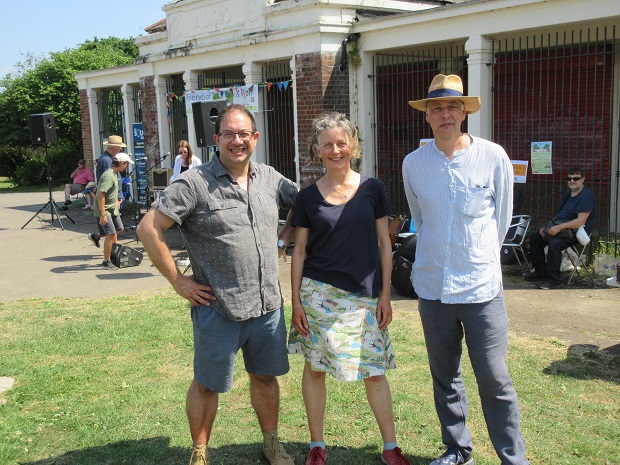
There could hardly have been a more enthusiastic celebration of the Barnet Vale community and its determination to secure the refurbishment of their historic former cricket pavilion.
During an eventful day hundreds of residents and families packed the Tudor Park sports ground to enjoy the first-ever Barnet Vale festival.
There were inspiring visions of how the abandoned pavilion might be brought back to life if funding can be obtained from the National Lottery.
There was also a fascinating lookback at local history: how surgical appliance manufacturers Maw’s moved to Barnet just over a century ago, opening a new factory with its own sports ground and pavilion.
Simon Cohen (above far right), chair of the Friends of Tudor Park and Pavilion, opened the festival together with local architect Simon Kaufman and landscape architect, Katy Staton, who described how the building and its setting could be transformed for community use.
Mr Cohen reminded visitors how the restoration campaign had kicked off in 2020 after he and other volunteers were dismayed by its neglect and determined that the centenary of the pavilion’s opening 1920 should not go unnoticed.
“The pavilion was just being left to rot away. It was falling apart, and we decided there and then to do all we could to get it re-opened for public use.”
After launching a Save Tudor Park Pavilion campaign on Twitter, the friends conducted a local survey which had over 1,000 responses with the majority wanting the pavilion brought back into use with a cafe, toilets, and other facilities.
Since then, the friends have gone from strength to strength: they are now a registered charity; they are preparing an application for funding from the National Lottery; and have won the support of Barnet Council which has set aside £200,000 towards the pavilion’s restoration.
Such has been the success of a Facebook campaign to save the pavilion – and to celebrate the history of its link to the opening of Maw’s factory – that it attracted the interest of one the Maw family’s descendants and a historian who are jointly conducting research for a book into the history of Maw’s and its manufacture and supply of surgical appliances and products.
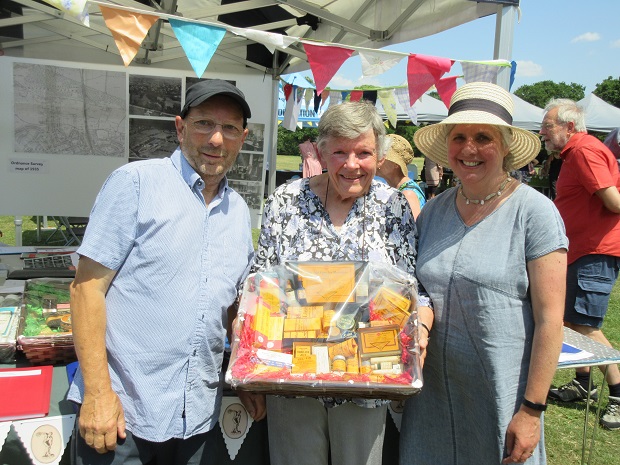
Mike Hudd (above left) of Chard in Somerset, is the great grandson of Henry Maw, one of the former directors of the company.
He is working with Sue Watts (centre) of Sheffield, who has a vast collection of the surgical products and appliances produced and sold by Maw’s since the company’s foundation. Her interest started when she started collecting Maw’s baby feeding bottles – some of which date back to the 1860s.
Barnet historian Dr Susan Skedd (far right) – who has been researching the history of Maw’s and the construction of the cricket pavilion for some years – was delighted to discover that so much work has already been done on the history of the company.
Dr Skedd’s research into Maw’s and the pavilion was a spin off from a history project into the 80th anniversary of nearby Cromer Road School whose pupils used to play games at the sports ground.
In her lookback on the life and times of the Maw family, Sue Watts said John Maw from Lincolnshire established the company in London in 1813 making surgical instruments and appliances.
In 1919 his successors bought the 23-acre site, which was formerly grazing farmland between New Barnet and Hadley Wood, at a cost of £6,000. It had space for a new factory to make surgical products as well as land for a company sports ground.
The sports pavilion was officially opened in July 1920 by Emily Rosa Maw in memory of her husband Charles Trentham Maw who had died suddenly in 1918.
The citation at the opening said: “We trust this pavilion will accomplish its purpose, prove a great success and always be conducted in a manner worthy of the gentleman and sportsman to whose memory it has been erected.”
The ceremony ended with the National Anthem played by the Barnet Discharged Soldiers and Sailors Band.
Unfortunately, the memorial plaque unveiled at the opening – “This pavilion was erected in memory of Charles Trentham Maw by his wife AD 1920” – has disappeared, and Miss Watts says she would like to discover its whereabouts.
When Maw’s closed in the 1970s – the site of the factory is now a housing estate – the last family director Denys Maw, who retired in 1968, kept the Maw’s company archives at his home. When he died in 1975, his widow Gwenony Maw stored the documents and correspondence in the loft.
She died in October 2022 at the age of 100 and the archive was then bequeathed to Mike Hudd whose great grandfather was Henry Maw.
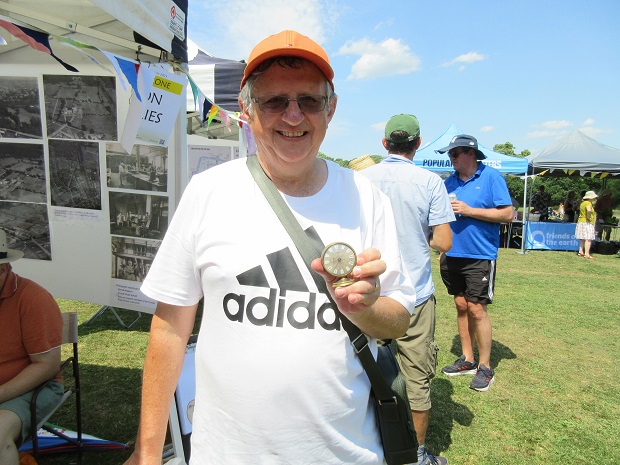
Among the visitors was Michael King from Southend – who was anxious to display a clock which had been presented to his late aunt Emily Crockford in 1972 after completing 25 years’ service with Maw’s. She had lived in Jackson Road, East Barnet.
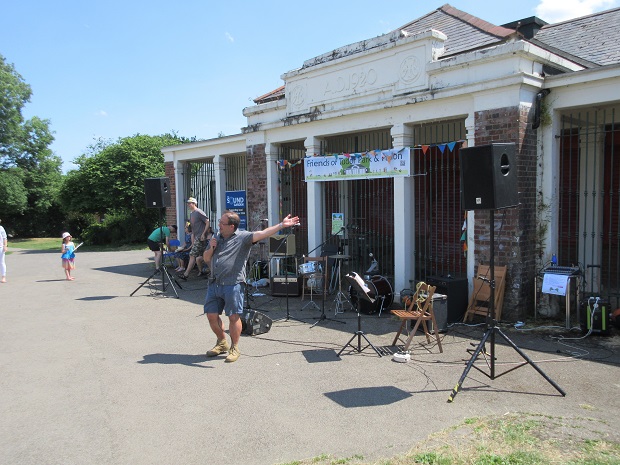
In his speech urging support for the pavilion’s restoration, vice chair Simon Kaufman urged residents to make donations – however small to their Just Giving page because their application for funding to the National Lottery would need to demonstrate strong backing from the local community.
Repairing and refurbishing the pavilion and re-opening the building as a hub for community activities with toilets, sports changing rooms and other facilities could cost up to £700,000.
He said the friends had purposely called the event the “Barnet Vale Festival” because this was now the official designation for the area following its renaming as the Barnet Vale ward by Barnet Council.
“We want to create a sense of community and what better way than to embrace the concept of Barnet Vale – we are not High Barnet, we are not New Barnet, we are Barnet Vale.”
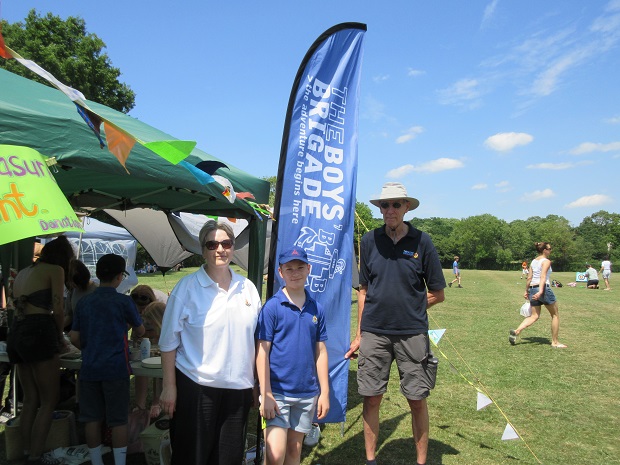
One of the stalls at the festival was in support of the 4th Barnet Boys’ Brigade. Two of the brigade’s leaders, Amanda Michalia and Alan Conner – with Amanda’s son Charlie (12) – were busy fund raising.
The 4th Barnet is celebrating its recent success in three members achieving gold in the Duke of Edinburgh’s Award scheme – Michael Michalia, Louis Kershaw and Becky Hay of the 1st Barnet Boys’ Brigade and Girls’ Association..
For more information about saving the Tudor Park pavilion: www.fotpp.org.uk or email: friendsoftudorparkpavilion@gmail.com
3 thoughts on “Barnet Vale Festival backs campaign to repair and refurbish Tudor Park’s abandoned sports pavilion”
Comments are closed.

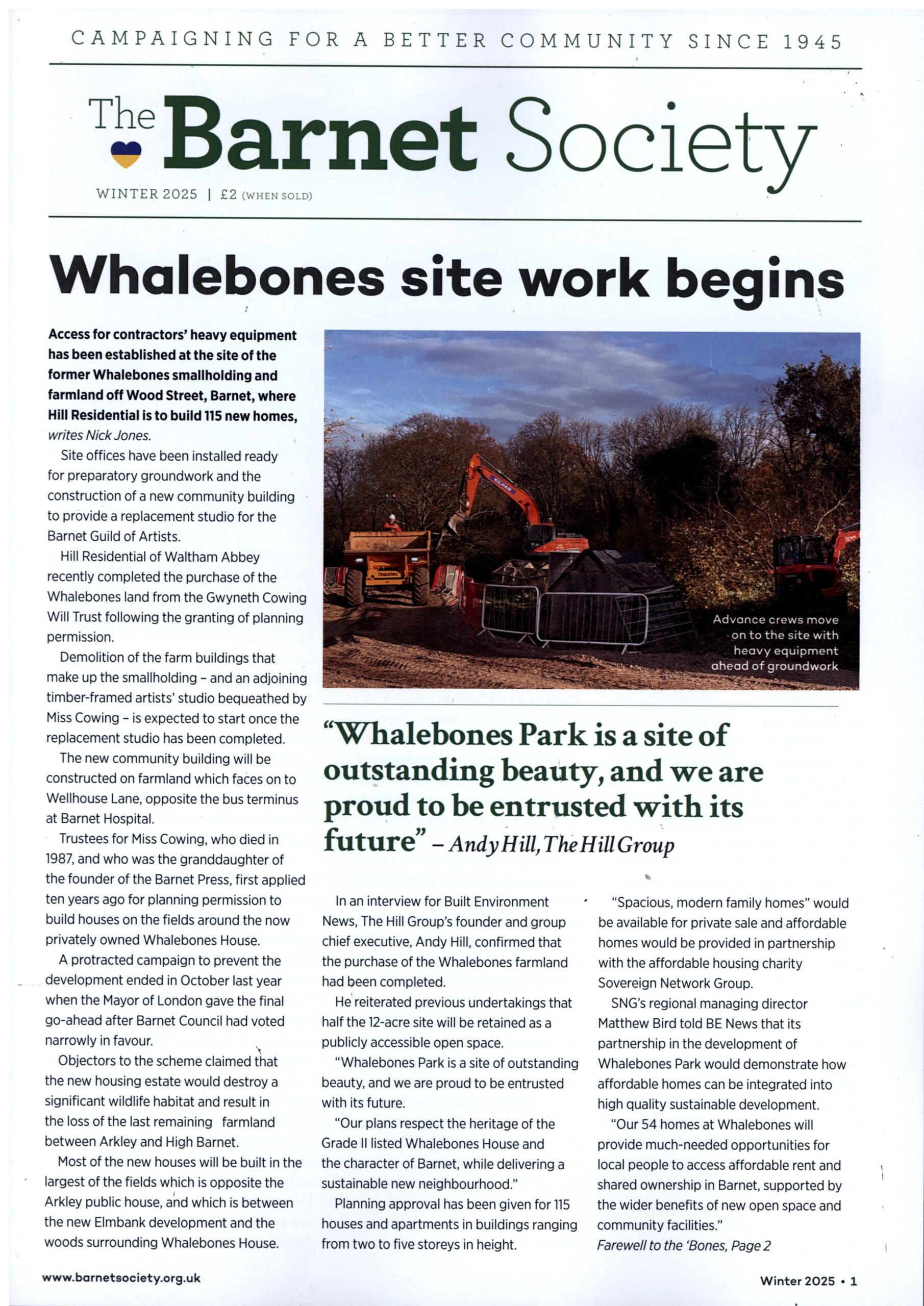
Having lived in High Barnet for 36 years I also finally got to visit Tudor Park with a friend from Southgate. Sue Watts gave us a fascinating account of the Maw’s history and we had a great time visiting all the organic growing stalls. Hopefully the oregano I was given is rooting!
A beautiful park with a great children’s playground just below Hadley Woods. Will visit again.
Good luck with fundraising to restore the sports Pavillion.
After 40 years in Barnet, we made our first visit to Tudor Park. What a discovery! It’s bound to become one of our regular dog walking haunts!
To join the Friends of Tudor Park email list: https://mailchi.mp/ffa27bf8ef77/join-our-mailing-list